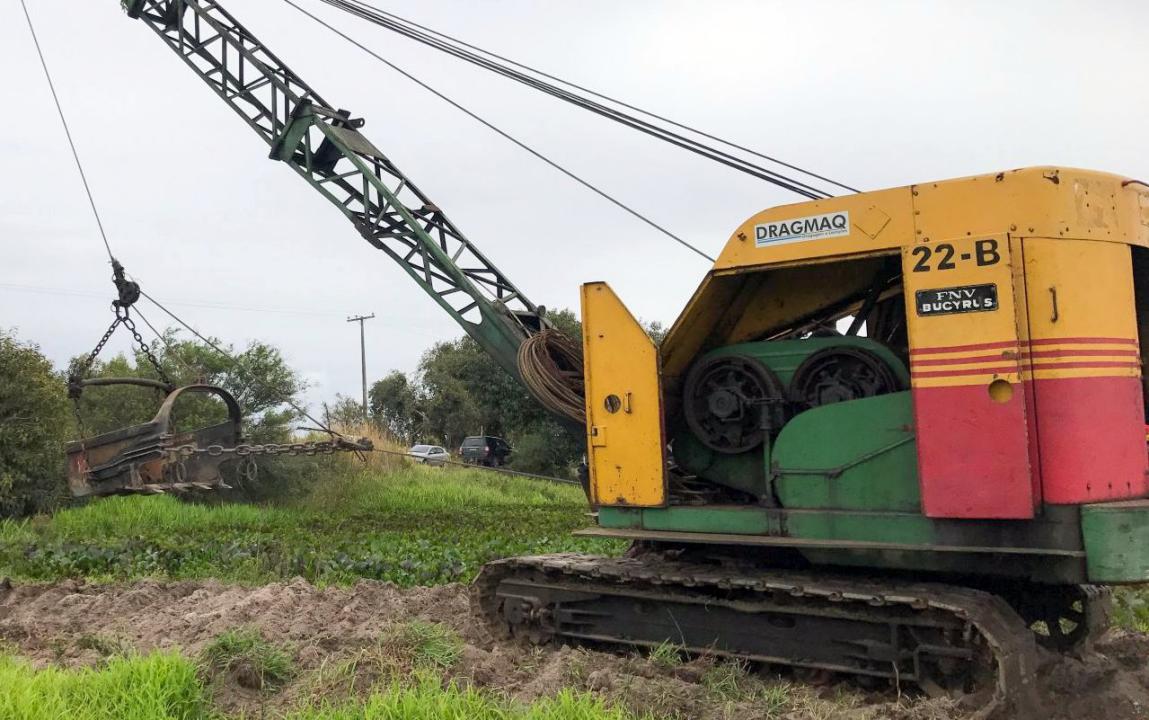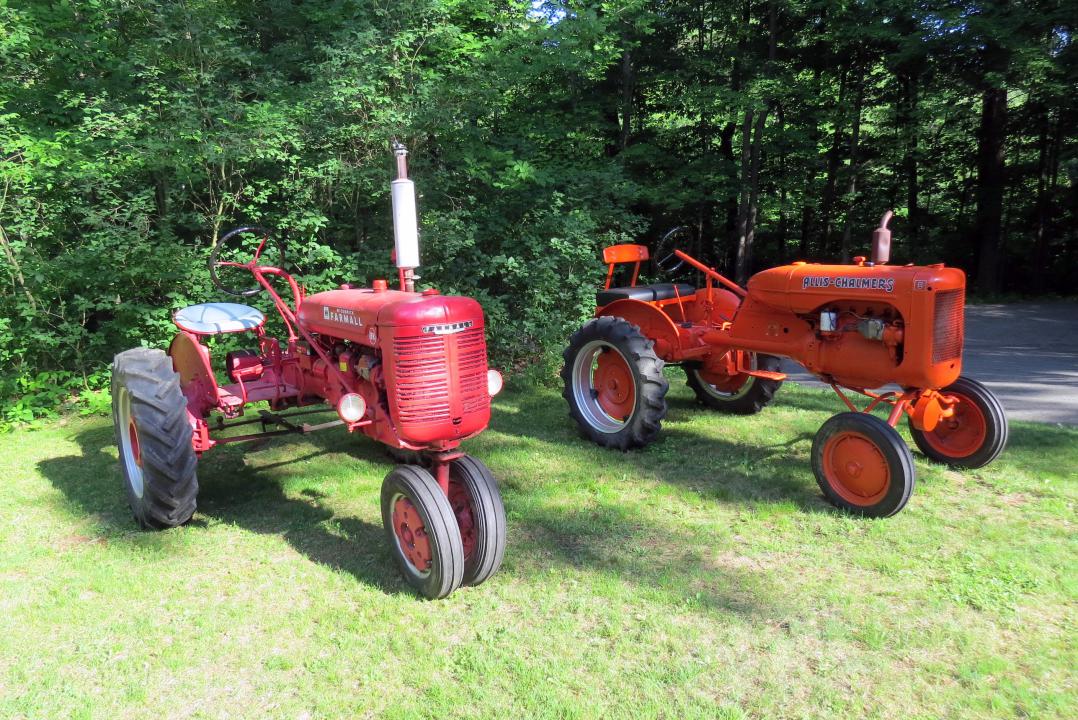
America the Manufacturing Great: the mid-century story
I wrote this piece for the Greenfield Spirit, our town wide newsletter in the summer of 2021. I’m including it here because although it is not entirely about our homestead, I think it’s of general interest to you, our readers.
When I was in my middle twenties, my friend Alan Marsh and I worked together and had a little construction business. I was a carpenter and a welder and Alan was a mechanic and heavy equipment guy… and a pretty good carpenter as well. Alan was fascinated with heavy equipment from a very early age. By the time he was a teenager; he had already bought an old Autocar truck and gotten it running. The Autocar was a late forties flatbed that had been used as a granite hauler. It was no light duty truck; this thing was massive and heavy duty. It hadn’t run in years but Alan got it going.
Then there was an early 60s Army deuce and a half that Alan bought and fixed up as well. That truck got used as a hay truck, his mother had horses. Then Alan decided that he would buy his first real piece of heavy equipment. I say first because this was the beginning of both a career and a collecting hobby that continues to this day where he lives in neighboring Temple. I went with him to Stafford Springs Connecticut to a heavy equipment junkyard where he bought an early 50s Bucyrus Erie 22B crowd shovel. If you’re wondering what a crowd shovel is; think steam shovel… but, without the steam. A diesel powered crane. You dig away from you with a bucket on a dipper arm. The bucket has a trap door on the bottom to empty it.

Slightly Smaller but very Similar Crowd Shovel
The 22B is a smaller machine with a ¾ yard bucket. It was a very successful machine for Bucyrus Erie, with a long run. They built approximately 19,000 of them (some under the Bucyrus Ruston name) between 1937 and 1976. The 22B could be configured several ways: as a crowd shovel, traditional hoisting crane, a cable backhoe or a dragline. Alan’s plan was to turn this machine into a dragline. Draglines look like traditional cranes but there is an extra cable that draws a perforated scoop bucket horizontally towards the crane. Draglines are most commonly used to dredge ponds and clean out swampland. The perforated bucket collects muck but allows water to escape as you “drag”.
Alan found a boom, a couple of drag buckets and a fair lead which is a set of guide pulleys attached the base of the crane to guide the drag cable to its drum. I welded the fair lead to the crane, Alan hooked up the rest and we had a dragline.
We were off to the races and started dredging. Now the 22B is an all cable machine with no hydraulics. The operator has an array of levers and pedals to actuate the dragline functions. Operating is a fairly athletic event and quite tiring. Power for the most part is transferred from the diesel engine by means of several swing clutches. The swing clutches are big electric armatures with outside constricting brake bands that when applied capture the power. There were I believe five of these clutches. For the sake of full disclosure, if there are any Erie aficionados reading this, I could be wrong on some of these details. This happened over 40 years ago and whether there are four or five clutches doesn’t in any way diminish the importance of this story. So feel free to cut me some slack.

22B Dragline with a Couple Swing Clutches Showing
So, one day we were dredging and there was a big snap followed by horrendous screeching and grinding noises. Alan shut the crane down immediately. One of the constricting brake bands had failed… broken in two to be exact. A couple hours later we had the band out and I set off to Needham (just outside Boston) to the local Bucyrus Erie dealer. What happened in the parts department was nothing short of an epiphany and changed my view of the world forever. I’ve told this story many times across my wide life.
I marched up to the parts counter and plunked down the broken brake band down in front of a middle aged guy that worked there. “Got one these?” I asked. “Yup” and he disappeared into the backroom. I was very surprised that he didn’t ask me anything about what machine it came from. A minute later he reappeared and plunked down the new band. I picked up the two broken pieces and set them on top of the good one to see if they lined up… they did. He added “that’s the right one son, don’t you worry”. I countered with “but you didn’t ask me what machine it was from?” He replied “it doesn’t matter”. “What do you mean it doesn’t matter?” He explained that it didn’t matter because that band fits a long list of machines (which he recited) and of course included the 22B. Undaunted I shot back “yeah, but you didn’t ask what year it was!” Again he said “it doesn’t matter, this band fits all those machines from 1937 to 1979” Again I may not have the years exactly right, you know the 40 year ago thing, but it was a long stretch of 40 or more years. Battered but not completely down I played my last defiant card “OK, but there’s five clutches in that crane… you didn’t ask me which one!” He flat out smirked, a devilish smirk that revealed just how much fun he was having with me and said once again “it doesn’t matter, because you see, all the clutches are identical” And then, with an evil grin he played his hole card “would you like another one to take along as a spare?” Utterly defeated I stammered “yes sir!” I think my voice may have even cracked. He rang me up with a hugely satisfied look on his face and I skulked out of the dealership.
As I walked to my truck it began to sink in what I had just learned. This crane was a product of mid-century America fresh off the war when America flexed its industrial might the likes of which the world had never seen. America retooled during World War II and produced war goods at a dizzying rate. Henry Ford’s Dearborn car and truck plants started building tanks and planes in numbers unimaginable prior to that time. The great shipyards of the east coast produced Liberty Ships, cargo ships in less than a week. If the German U-boats sank ten Liberty Ships in a week, the shipyards built twenty. This was a period of manufacturing excellence. It was a huge factor in winning the war. My head was spinning as I drove back to the jobsite. I could almost hear the kettle drums and rising crescendo of trumpets from Stanley Kubrick’s 2001 movie sound track. Bucyrus Erie did it perfectly. Their engineers used one swing clutch over and over again in host of machines. It was a stroke of engineering genius. There were of course other clutches in much bigger machines, but they had a common part for their dealers to stock that had dozens of applications. It even made our life easier in the field. I came back with a spare band which we kept in the crane in case another band let go… and it didn’t matter which one.
I don’t want to be the old guy that crows “you know, back in the when, we knew how to do it, today everything is crap”. But, it pretty much sums up exactly how I feel. In mid-century America, we made a lot of the best stuff, especially things like heavy equipment. If someone wanted a bulldozer, no matter where in the world they were; their first choice was an American made machine.
By contrast let me offer an example from the modern world. In the rural fire service we have pagers that we wear on our belts that let us know when there is a call. One of the major pager manufactures releases a next generation pager every five or six years and they announce that they will only support the previous generation pager for another year or two. The pagers are expensive (around $500) and an absolute necessity. And here comes the kicker… no parts from the previous generation are compatible with the next. Batteries… absolutely not, they are a different size. The plastic belt clip, we break those all the time… different size. The list goes on and on. This is a cynical marketing plan. Nothing is intergenerational. This is the opposite of what Bucyrus Erie did, and it’s a shame. There is very little in the way of common parts today. What happens when your computer printer stops working? Do you try to find parts for it or take it somewhere to be repaired? Absolutely not, you throw it away and buy a new one.

My Working Antiques
I own four tractors on my modest little homestead, two modern Kubota’s and a 1946 Farmall and a ‘38 Allis Chalmers. I use all of them; the two antiques run just fine. That’s what I mean when I say America was the manufacturing great. Let’s be honest, an awful lot of us drive cars made by Toyota and Honda. I hear a lot of people talk about the new Kubota or Komatsu excavator they just bought… not so much about Caterpillar. In today’s global economy, there is a lot of competition from overseas. In some respects it feels like we have lost our way. But I don’t think it has to be like that, we can regain the edge. It seems to me that we don’t have to look far for a good solution to be competitive again. It’s a question of which direction to look… my suggestion is to look over our shoulders at our own remarkable past.

Recent Comments